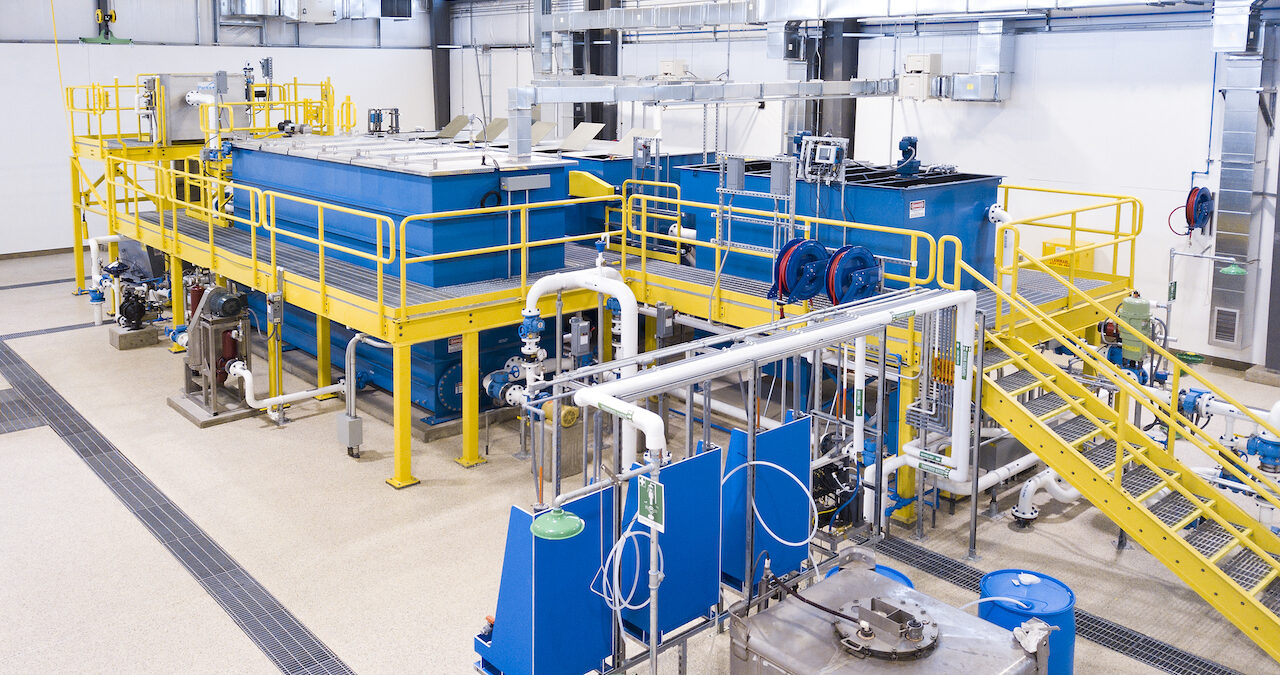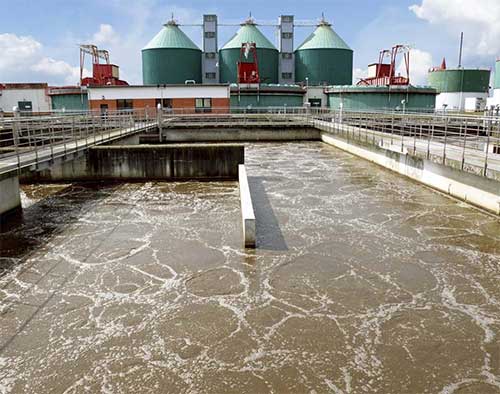Industrial Waste Water Treatment-- Enhance Effectiveness with Personalized Water Treatment Equipments
Industrial Waste Water Treatment-- Enhance Effectiveness with Personalized Water Treatment Equipments
Blog Article
Developments and Advances in Hazardous Waste Water Treatment Technologies
The landscape of commercial wastewater therapy is going through a transformative shift, driven by innovations that improve both efficiency and sustainability. As regulative standards evolve, the combination of AI and equipment discovering right into wastewater management systems guarantees to make certain and improve operations compliance.
Summary of Drainage Therapy Technologies
Wastewater therapy innovations incorporate a series of techniques created to get rid of contaminants from commercial effluents before their launch into the atmosphere. These innovations are important for keeping environmental equilibrium and ensuring conformity with ecological laws. The key categories of wastewater therapy consist of physical, chemical, and biological methods, each offering unique purposes based upon the nature of the contaminants existing.

Organic treatment approaches use bacteria to break down natural matter, making them especially efficient for organic-rich effluents. Methods like activated sludge and biofilm activators harness the natural deterioration capacities of bacteria, causing substantial reductions in biochemical oxygen need (FIGURE)
Advanced Filtering Methods
Advanced purification strategies stand for a crucial development in the realm of industrial wastewater treatment, boosting the efficiency of contaminant elimination procedures. Industrial Waste Water Treatment. These approaches incorporate a variety of technologies, consisting of microfiltration, ultrafiltration, nanofiltration, and turn around osmosis, which give consecutive barriers for various particle sizes and chemical frameworks
Microfiltration and ultrafiltration make use of membrane layer systems to eliminate suspended solids, bacteria, and larger organic particles, boosting the quality of effluent before further treatment. Nanofiltration links the void between ultrafiltration and reverse osmosis, effectively removing divalent ions and natural substances, thus reducing the lots on downstream procedures.
Reverse osmosis offers the highest degree of filtration by enabling only water and tiny particles to pass through its semi-permeable membrane layers, making it optimal for redeeming top quality water from commercial effluents. Current improvements in membrane technology, consisting of the advancement of more sturdy and fouling-resistant materials, have actually substantially improved functional effectiveness and reduced prices.
Integrating these sophisticated purification techniques not just improves the total treatment procedure however also adds to sustainability efforts by allowing water reuse and source recovery in commercial settings. (Industrial Waste Water Treatment)
Organic Therapy Advancements

In addition, the advancement of engineered organic systems, such as membrane bioreactors (MBRs), incorporates biological therapy with sophisticated membrane purification. This integration permits higher effluent quality and reduced impact, making it ideal for space-constrained commercial facilities. Innovations in genetically crafted microbes have likewise arised, enhancing the biodegradation of specific contaminants, such as pharmaceuticals and heavy steels, that are typically testing to remove.
In addition, the implementation of bioaugmentation techniques, where helpful germs are presented to improve the existing biological therapy procedures, has revealed promising lead to improving therapy efficiency. These advancements collectively indicate a pattern in the direction of more lasting and efficient biological therapy approaches that can adjust to the progressing intricacies website link of commercial wastewater streams. As industries proceed to prioritize environmental compliance, these biological advancements will certainly play an essential function in wastewater management.

Resource Recuperation Methods
In commercial settings, the combination of source healing techniques has actually come to be significantly vital for boosting sustainability and reducing waste. These techniques focus on drawing out important products and energy from wastewater streams, thereby transforming potential toxins right into multiple-use sources.
One noticeable technique is nutrient recuperation, where nitrogen and phosphorus, often present over in wastewater, are recorded and exchanged plant foods. This not just reduces ecological influences however also provides a circular economic climate solution for farming applications. Furthermore, modern technologies such as anaerobic digestion enable for the conversion of organic waste into biogas, a renewable resource resource that can offset fossil fuel usage in industrial procedures.
Moreover, progressed purification and membrane layer modern technologies help with the recovery of commercial byproducts such as salts and steels. These recuperated products can be rehabilitated into production procedures, lowering the demand for virgin resources.
Future Patterns in Drainage Management
As industries progressively focus on sustainability, the future of wastewater monitoring is readied to go through considerable makeovers. Technological advancements, such as artificial intelligence and artificial intelligence, will certainly allow more effective tracking and administration of wastewater systems. These modern technologies can anticipate upkeep demands, optimize treatment procedures, and boost decision-making, inevitably decreasing operational costs and ecological effect.
In addition, the assimilation of round economic climate principles will play an important duty in wastewater administration. Industries are anticipated to change towards systems that not just deal with wastewater however additionally recover important sources, such as nutrients, water, and energy. This change will certainly decrease learn this here now waste and promote the reuse of products, aligning with global sustainability objectives.
Emerging treatment techniques, such as membrane bioreactors and progressed oxidation processes, will certainly further boost the efficiency of wastewater treatment, permitting for better effluents suitable for reuse. Additionally, governing frameworks are likely to advance, highlighting more stringent standards for wastewater discharge and motivating sectors to adopt ingenious therapy services.
Verdict
In conclusion, the development of industrial wastewater treatment innovations demonstrates a substantial shift in the direction of boosted effectiveness and sustainability go to this web-site (Industrial Waste Water Treatment). Innovations in advanced filtration methods, organic treatments, and source recovery methods highlight the sector's commitment to ecological stewardship.
The landscape of industrial wastewater therapy is undergoing a transformative change, driven by advancements that boost both performance and sustainability.Wastewater treatment innovations encompass a variety of methods created to eliminate impurities from industrial effluents prior to their release into the setting.Harnessing the power of organic processes has led to considerable developments in the therapy of commercial wastewater.Additionally, the application of bioaugmentation approaches, where advantageous microbes are presented to boost the existing organic treatment processes, has revealed promising outcomes in boosting therapy performance. These innovations jointly signify a trend towards even more reliable and sustainable biological therapy methods that can adjust to the developing intricacies of commercial wastewater streams.
Report this page